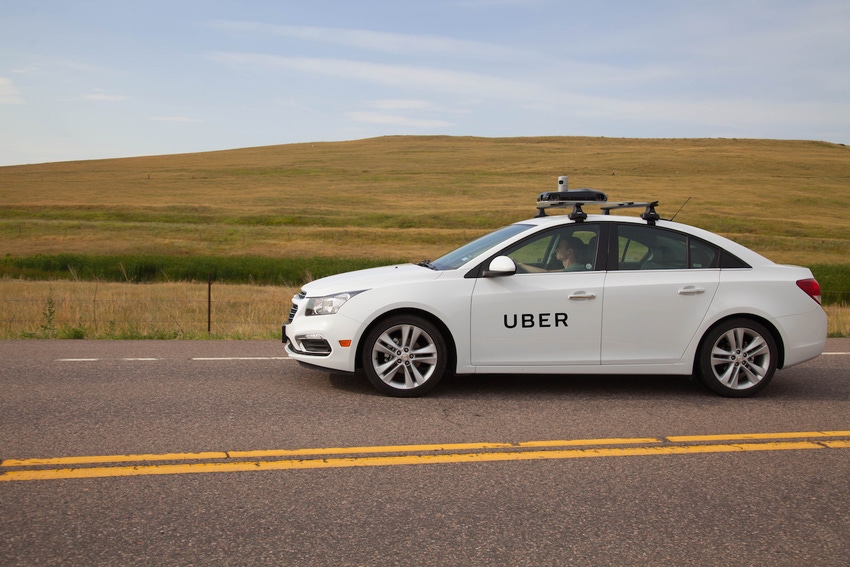Uber launches own mapping technology to drive towards autonomous vehicles
Uber has announced plans to ‘double-down’ its investments in digital mapping technologies to decrease its reliance on external sources and create a route into the autonomous vehicles sub-sector.
August 1, 2016

Uber has announced plans to ‘double-down’ its investments in digital mapping technologies to decrease its reliance on external sources and create a route into the autonomous vehicles sub-sector.
The move comes after the team announced a $3.5 billion investment from Saudi Arabia’s Public Investment Fund, though possibly wouldn’t come as a surprise though who keep an eye on industry hires. Last year, the team hired Brian McClendon, a former Googler who was part responsible for the development of Google Maps, Earth, Streetview and EarthEngine, who has since been working on the internal Uber mapping solutions. The move also provides more credibility to a company which is planning to enter into the competitive world of self-driving cars.
“Existing maps are a good starting point, but some information isn’t that relevant to Uber, like ocean topography,” said McClendon in a statement on the company website. “There are other things we need to know a lot more about, like traffic patterns and precise pickup and drop off locations. Moreover, we need to be able to provide a seamless experience in parts of the world where there aren’t detailed maps — or street signs.
“The ongoing need for maps tailored to the Uber experience is why we’re doubling down on our investment in mapping. Last year we put mapping cars on the road in the United States. This summer they hit the road in Mexico. Our efforts are similar to what other companies including Apple and TomTom are already doing around the world.”
The company already has an in-house mapping technology, though it has also been using third-party solutions also, including Google Maps. Google and Uber have traditionally been close, Google Ventures invested almost $300 million into the Uber in 2013, though it would appear the team are keen to move away from its reliance on third parties by bolstering its own engineering team. Efforts have focused on the US to date, though the mapping vehicles have begun work in Mexico, with other countries on the list in the future.
A significant area of growth for Uber is customers using the app when they are on holiday or on business trips (i.e. US customers using when travel to Europe or Asia), as opposed to local taxis at the airport. One of the main challenges here is how accurate local maps are in developing nations. Google will likely be making efforts to improve this, though Uber has a more urgent need to improve the accuracy due to its commercial link. This could be seen as enough of a driver in itself.
Back in May, Uber launched a hybrid Ford Fusion into Pittsburgh from its Advanced Technologies Centre (ATC), its first stage of testing its own efforts in the self-driving cars arena. Uber is later to the game than others in the sub-sector, though one of the long-term use cases for the technology is in taxis, public transit and also the transportation of goods. Although a young company, due to its market dominance Uber is a solid position to capitalize on the potential of the sub-sector once the technology is perfected.
Having its own mapping technology gives the organization a sense of credibility in what could prove to be a sensitive sub-sector, but also demonstrates the commitment of the team. Although figures have not been announced, $500 million has been reported as the investment which will be made into the technology.
While the company has not outlined any intentions to be a competitor to Google Maps, it could provide another useful revenue stream for the business moving forward. During the early days of Google’s Geo division, there was no immediate return for the business though this did not stop the internet giant investing heavily into the technology. In the years since, mapping technologies have become an important component of numerous websites and apps, as well as playing a more central role in the day-to-day lives of consumers. Mapping is clearly a very important aspect of an organization such as Uber, though the long-term licensing potential for the technology should the team be able to provide a solution which can compete with Google, could be attractive.
One example of this potential is the on-going Pokémon Go craze, which is continuing to attract users each day. Although a relatively simple game itself, the app combines an augment reality offering alongside Google Maps technology to create such an experience. Numerous other applications and websites use the Google technology also, representing a useful revenue stream which the internet giant currently dominates.
“Over the past decade mapping innovation has disrupted industries and changed daily life in ways I couldn’t have imagined when I started,” said McClendon. “That progress will only accelerate in the coming years especially with technologies like self-driving cars. I remain excited by the prospect of how maps can put the world at our fingertips, improve everyday life, impact billions of people and enable innovations we can’t even imagine today.”
About the Author(s)
You May Also Like











_1.jpg?width=300&auto=webp&quality=80&disable=upscale)


.png?width=800&auto=webp&quality=80&disable=upscale)